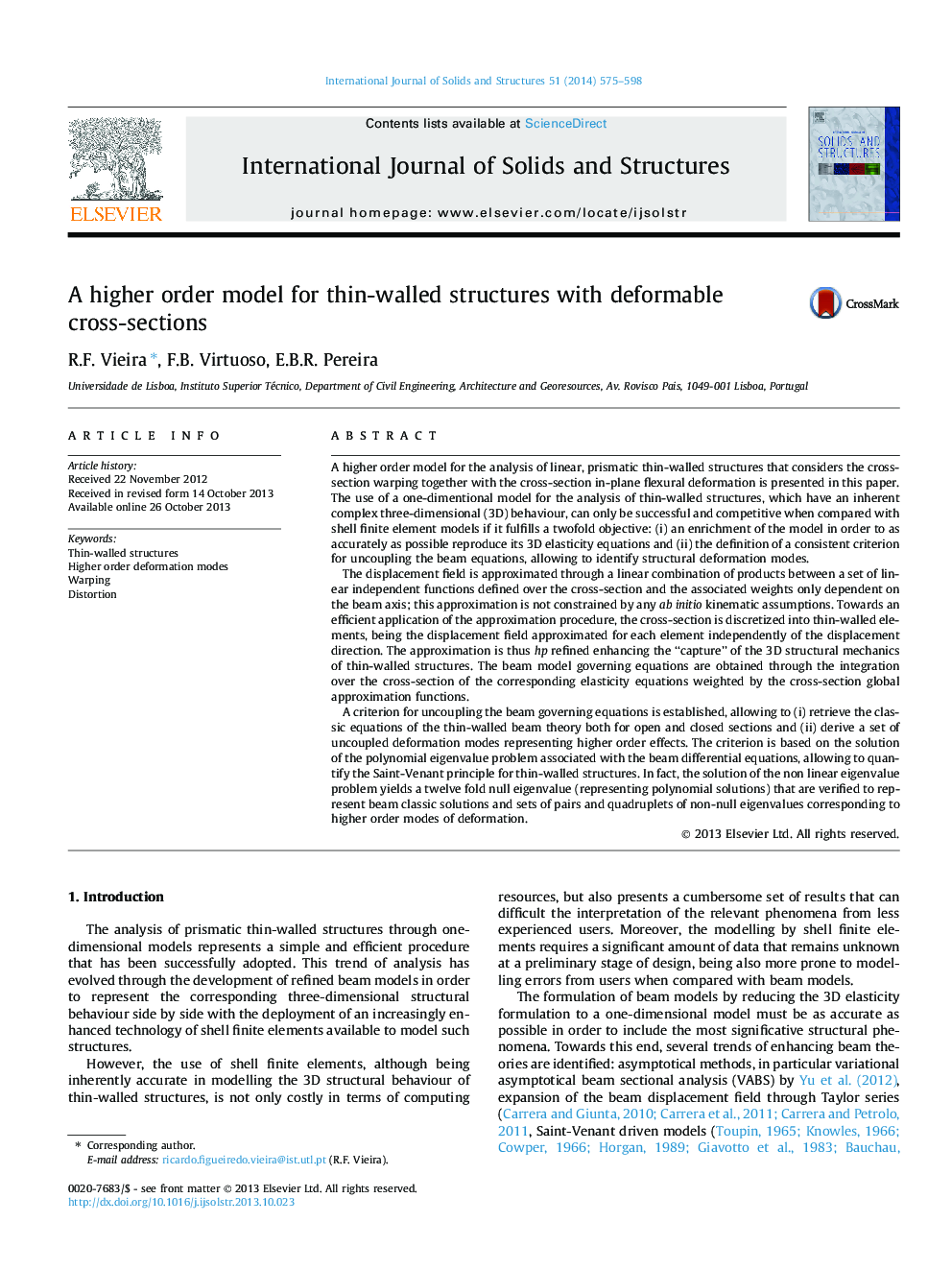| کد مقاله | کد نشریه | سال انتشار | مقاله انگلیسی | نسخه تمام متن |
|---|---|---|---|---|
| 277652 | 1430246 | 2014 | 24 صفحه PDF | دانلود رایگان |
• A higher order model for thin-walled structures with a general and deformable section is proposed.
• The model relies on deformation modes obtained by a quartic eigenvalue problem.
• The set of non-null eigenvalues define the higher order deformation modes.
• The cross-section warping and distortion modes are consistently derived.
• An hierarchic selection of modes is defined.
A higher order model for the analysis of linear, prismatic thin-walled structures that considers the cross-section warping together with the cross-section in-plane flexural deformation is presented in this paper. The use of a one-dimentional model for the analysis of thin-walled structures, which have an inherent complex three-dimensional (3D) behaviour, can only be successful and competitive when compared with shell finite element models if it fulfills a twofold objective: (i) an enrichment of the model in order to as accurately as possible reproduce its 3D elasticity equations and (ii) the definition of a consistent criterion for uncoupling the beam equations, allowing to identify structural deformation modes.The displacement field is approximated through a linear combination of products between a set of linear independent functions defined over the cross-section and the associated weights only dependent on the beam axis; this approximation is not constrained by any ab initio kinematic assumptions. Towards an efficient application of the approximation procedure, the cross-section is discretized into thin-walled elements, being the displacement field approximated for each element independently of the displacement direction. The approximation is thus hp refined enhancing the “capture” of the 3D structural mechanics of thin-walled structures. The beam model governing equations are obtained through the integration over the cross-section of the corresponding elasticity equations weighted by the cross-section global approximation functions.A criterion for uncoupling the beam governing equations is established, allowing to (i) retrieve the classic equations of the thin-walled beam theory both for open and closed sections and (ii) derive a set of uncoupled deformation modes representing higher order effects. The criterion is based on the solution of the polynomial eigenvalue problem associated with the beam differential equations, allowing to quantify the Saint-Venant principle for thin-walled structures. In fact, the solution of the non linear eigenvalue problem yields a twelve fold null eigenvalue (representing polynomial solutions) that are verified to represent beam classic solutions and sets of pairs and quadruplets of non-null eigenvalues corresponding to higher order modes of deformation.
Journal: International Journal of Solids and Structures - Volume 51, Issues 3–4, February 2014, Pages 575–598
